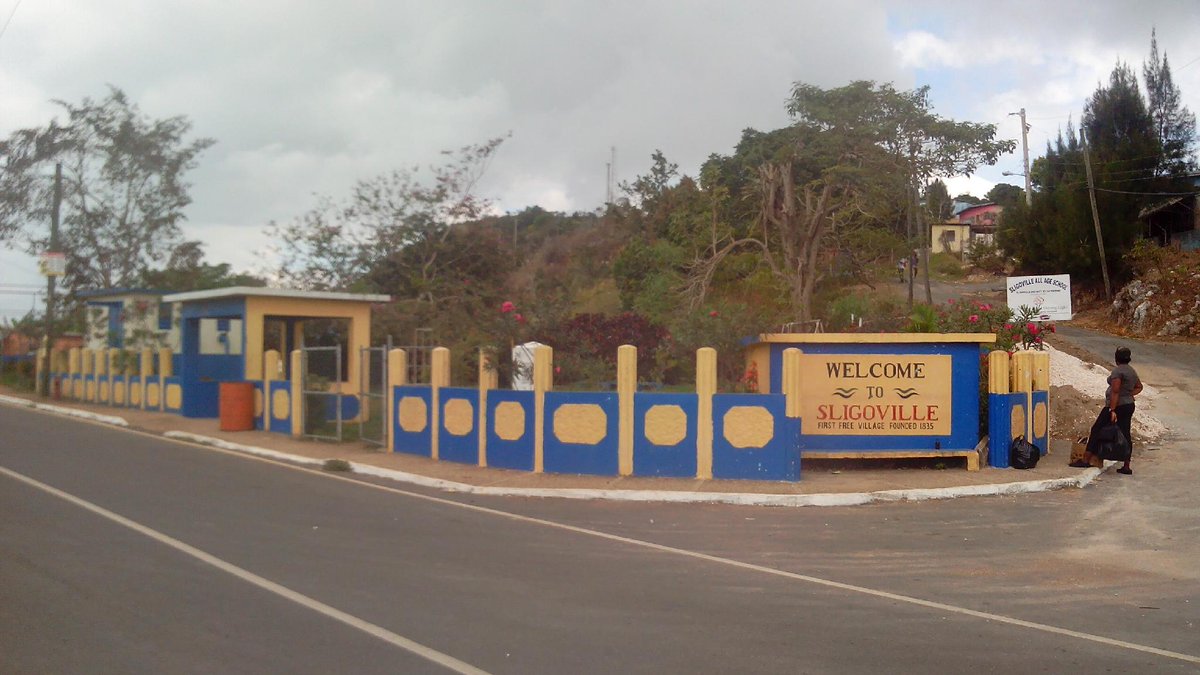When the Slave Emancipation Act was passed in 1833, it was expected to give all slaves in the British Empire their freedom.
The act, however, did not give immediate freedom to the slaves and they rather became “apprenticed” to their masters for a further four years.
This became known as the “apprenticeship system” which, to many historians, was “slavery under another name.”
Such was the case in Jamaica (then a British colony). In order to keep the apprentice system going for as long as possible, plantation owners planned not to sell land to the freed slaves and let them rent lodging on their property.
Black people in Jamaica then had to find a solution to this. According to varying accounts, they let the Quaker – a religious Society of Friends that played a major role in the abolition movement against slavery – purchase land for them.
Other accounts state that the purchase was led by Baptist Minister and abolitionist, Rev. James Mursell Phillippo, who had arrived in Jamaica in 1823. Campaigning for the abolition of slavery and the establishment of free villages for the emancipated slaves, Phillipo, on July 10, 1835, bought 25 acres of land for £100 ($124) in anticipation of full freedom for the black people.
This became the site on which the village of Sligoville was established. Located in the northwestern part of St. Catherine, this would become the first free village in Jamaica and eventually the birthplace of the Rastafarian movement, with the first Rastafarian village named Pinnacle established there in 1940.

At the time, the land was subdivided into 1/4 acre lots and sold to the emancipated slaves for the sum of £3 (4 dollars). The property was also then known as Highgate but was renamed Sligoville on June 12, 1840, in honour of Howe Peter Browne, the second Marquis of Sligo, who was governor of Jamaica from 1834 until 1836.
Sligo had then been sent from England to supervise the emancipation process for the newly freed slaves and the transition from the apprenticeship system to full freedom.
His tenure in Jamaica was, however, “marked by constant friction with the House of Assembly, where he was perceived as being overly sympathetic to the newly liberated enslaved people,” according to markdgljmci.com.jm.
Sligo, who abhorred the system at the time, was also frequently in conflict with some of the Stipendary Magistrates, whose conduct towards the formerly enslaved he found unjustifiably harsh.
Sligo would even liaise with Phillipo to construct a school and church on the property which would later be under his name. Unsatisfied with his leadership, a campaign of vilification against him in the Jamaican and British press began. In 1836, when he was not able to deal with the situation any longer, he stepped down from his position and returned to Ireland.
But he continued to receive details of the apprenticeship system from Phillip. Sligo would then relay the concerns to the House of Lords, and this would play a huge role in granting full Emancipation to Jamaica on August 1, 1838, instead of the year 1840 that authorities like the plantation owners had wanted.
With Emancipation came the creation of free villages across the island that were modelled after Sligoville. These include Sturge Town, St. Ann; Bethel Town, Westmoreland; Mount Carey, St. James and Islington, St. Mary, writes Jamaica Information Service (JIS).
By 1844, there were 116 free villages spread across six parishes of the island, with some 18,365 houses built.
Sligoville continues to have a historical significance as it was the first free village to be established in the West Indies.
“…because of the pride of the (former slaves) they did not want to be squatters. They wanted structure in which they could raise their families,” said Executive Director of the Institute of Jamaica (IOJ), Vivian Crawford.
According to Blackthen, Jamaican religious leaders had then, in anticipation for Emancipation, purchased more land in Sligoville for settlement. The land was purchased by former slaves rapidly with the intent of establishing schools, churches, and housing ahead of full freedom.
A decade later, it would become the birthplace of the Rastafarian movement as the Pinnacle, the birthplace of the movement was established at Sligoville.

Created in the style of an African village, Pinnacle promoted “a socialistic life” based “on principles of communalism and economic independence from the colonial system.”
“Families worked together to cultivate a range of crops, burn hardwood for charcoal, operate a bakery, make crafts, and raise livestock—all for their own subsistence or to sell in the Spanish Town Market. In particular, the cultivation and sale of ganja, or marijuana, quickly enabled the community to become economically independent,” writes Lucy McKeon in The New York Review of Books.
Today, Sligoville, which still exists, has relics of Jamaica’s past, including the ruins of Highgate House, where successive British governors lived; and the St. John’s Anglican Church built in 1840 by John Agustus O’Sullivan as a private chapel for his family. Remnants of a coffee mill and a tank where the ex-slaves got their water can also still be seen in the area, according to Jamaica Information Service.
Residents of Sligoville, many of whom are direct descendants of the freed slaves have since formed the Sligoville Heritage Foundation Benevolent Society “with the goal of preserving the heritage and safeguarding the legacy of the area.”
Secretary of the Society, Girsham McLaughlin, recently told JIS NEWS that the village is an important part of Jamaica’s history.
“We are trying to promote Sligoville as a heritage site because we were the first free village to be established after the abolition of slavery. There are specific structures that date back to the time of slavery and we are trying to get funding to preserve what is left of those (structures). If we don’t preserve them we will have lost a significant part our history.”










